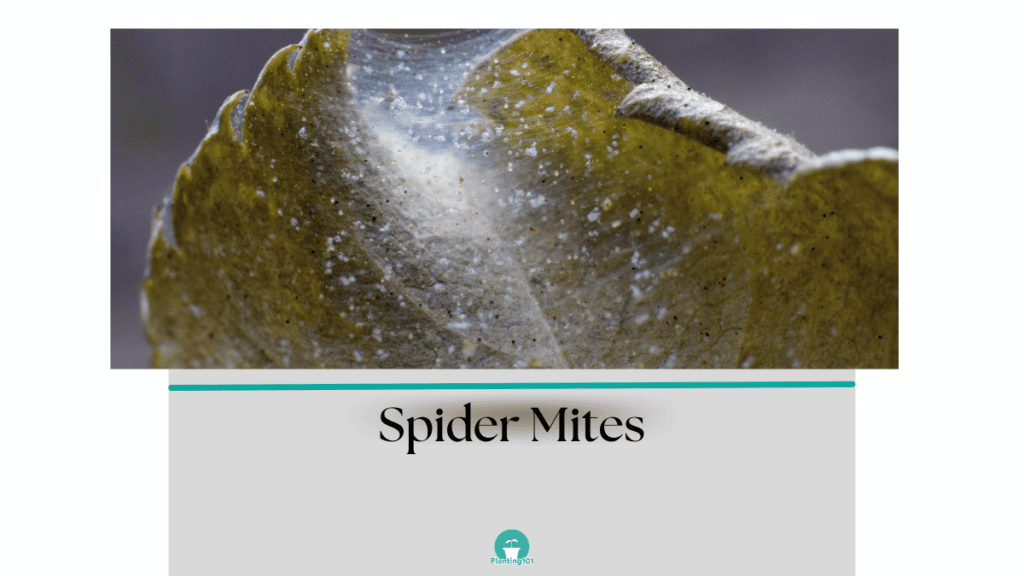African Mask Plant or Kris Plant (Alocasia sanderiana) is a popular houseplant with striking patterned foliage. It is not the easiest houseplant to care for because it can be fussy when it comes to light and moisture requirements. The African Mask plant is native to the warm and humid environment of the Philippines which is not very easy to replicate indoors. Here are tips on how to take care of your African Mask plant indoors.

African Mask Infographic

African Mask Basics
| Name | African Mask or Kris Plant |
| Scientific Name | Alocasia sanderiana |
| Care Level | Difficult |
| Light | Bright indirect light |
| Daytime Temperature | 65 to 85F (18-30C) |
| Night Time Temperature | 65 to 85F (18-30C) |
| Water | Moderate Water |
| Humidity | High Humidity |
| Potting | Well-draining, organic, all-purpose potting mix |
| Fertilizer | Once every 3 months (Growing season) |
African Mask Plant: Other Names
African Mask is also called Sander’s Alocasia and Kris Plant.
African Mask Plant: Varieties
Alocasia ‘Zebrina’– The stem resembles zebra stripes.

African Mask: Plant Size
African Mask Plant can grow to 3 feet tall when kept as indoor houseplants. Its leaves can grow to an average of 16 inches long.
African Mask Plant: Toxic to Pets?
African Masks are toxic to humans and pets. Keep your African Mask plant out of reach of children and pets.
Don’t let children or pets chew on the leaves of the African Mask plant because it contains calcium oxalate crystals. The crystals can cause vomiting and difficulty breathing. It can also result in swelling of lips, tongue and mouth and excessive drooling.
If you see any of these symptoms and suspect ingestion of African Mask plants, call poison control immediately! Also, call your pediatrician or vet once you start seeing adverse reactions in children and pets.
Light
African Mask Plant: Sun or Shade?
African Mask Plant will do best in bright, indirect light. Filter the sunlight using sheer blinds or sheer curtains. Avoid direct sunlight and southern exposure.
Water
How Often Should You Water Your African Mask Plant?
It can be tricky to get the watering right with your African Mask plant. In the summertime, water your African Mask when the soil feels dry. The best way to tell when it is time to water your African Mask is to feel the soil. Stick your finger in the soil 1 inch deep. If the soil feels dry, it’s time to water your African Mask.
In the Fall and Winter, your African Mask Plant goes into a dormant period when the leaves fall off. During this dormant period, reduce watering but don’t let the soil dry out completely.
What Type of Water Should You Use When Watering Your African Mask?
Your African Mask can be watered with tap water but be mindful of the water temperature that you are using to water your African Mask. Don’t use straight cold water from the tap to water your African Mask. African Mask prefers lukewarm water. When you turn on the cold water from the faucet add a little bit of warm water.
How Do You Make Sure There is Proper Drainage for Your African Mask?
Make sure there are drainage holes at the bottom of your African Mask’s pot. After watering your African Mask and you see water draining out of the pot’s drainage holes, make sure you empty out the accumulated water in the saucer. Don’t let your African Mask’s pot sit in this puddle of water. It will cause root rot!
Humidity
Do You Need to Mist Your African Mask?
Yes, misting your African Mask will increase overall humidity. However, when water starts dripping from the leaves, reduce watering and increase light exposure.
How to Increase Humidity for Your African Mask Plant?
Your African Mask is a houseplant that thrives in humid conditions. Indoor air can be drying. Make sure you do your best to increase indoor humidity. You can do this by spraying your African Mask with water twice a week. Turn on the humidifier. Keep African Mask in a saucer filled with water. But make sure the pot is elevated with pot feet or pebbles so your African Mask is not sitting directly on the water.
Soil
What Type of Potting Mix is Best for Your African Mask?
Your African Mask needs a well-draining, organic all-purpose potting mix.
How Do You Know When To Repot Your African Mask?
Repot your African Mask when it’s outgrowing its current pot. Repot in a container with a diameter 2 inches larger than the current pot.
Fertilizer
Do You Need to Fertilize Your African Mask?
Your African Mask should be fertilized once every 3 months during the growing season.
What Fertilizer Should You Use on Your African Mask?
Use a slow-release fertilizer on your African Mask plant.
Propagation
How Do You Propagate Your African Mask Plant?
Your African Mask Plant is easy to propagate. You can propagate your African Mask plant by division of its rhizomes. Below are steps on how to propagate African Mask Plant by dividing its rhizomes.
1. Dig Up your African Mask Plant
Using a hand shovel, dig up your African Mask Plant and lift out the entire plant. Be careful, don’t damage the roots and rhizomes. Dig a few inches away from the plant.
2. Divide the Rhizomes
Carefully divide up the rhizomes of your African Mask Plant
3. Plant the African Mask Plant Rhizomes in a New Pot
Plant each rhizome into a new pot. Don’t plant the rhizomes too close together. Ideally, plant each one in its own pot. Water the new plant immediately after planting. Then water every 2-3 days until the roots are established.
4. Place New African Mask Plant in a Spot with Bright Indirect Sun
Place your new African Mask plant in a spot with bright indirect sunlight. Don’t put it in direct sunlight. Keep your African Mask plant in a spot that is warm and humid.
Common Problems of African Mask Plant Care
The most common problems that affect African Mask Plants are spider mites.
African Mask: Yellow and Brown Spots with Spider-Like Webs on Leaves and Stems
African Mask Problem: There are yellow and brown spots on the leaves of your African Mask Plant. You also see spider web-like webbing on the leaves and stems.

Cause: The spider webbing and yellow and brown spots are signs of spider mites attacking your African Mask Plant. Spider mites are tiny pests that are too small to see with your bare eyes.
Solution: To treat spider mites on your African Mask Plant, spray off the leaves with water from a garden hose. The force will cause the little spider mites to wash off the leaves. You can also wash mites off with soapy water or rubbing alcohol. There are also horticultural oils and insecticidal soaps that you can use to kill off spider mites.
Check out our article on how to make your own homemade pesticides using baby shampoo: How to Make Horticultural Oil and How to Make Insecticidal Soap
You May Also Be Interested In:
How to Take Care of Haworthia (infograph)
How to take Care of Ponytail Palm (Infograph)
How to take Care of Swiss Cheese Plant (Infograph)
Planting 101 participates in affiliate programs including Amazon Associates Program and may earn commission from qualifying purchases at no extra cost to you. Thank you for your support.

